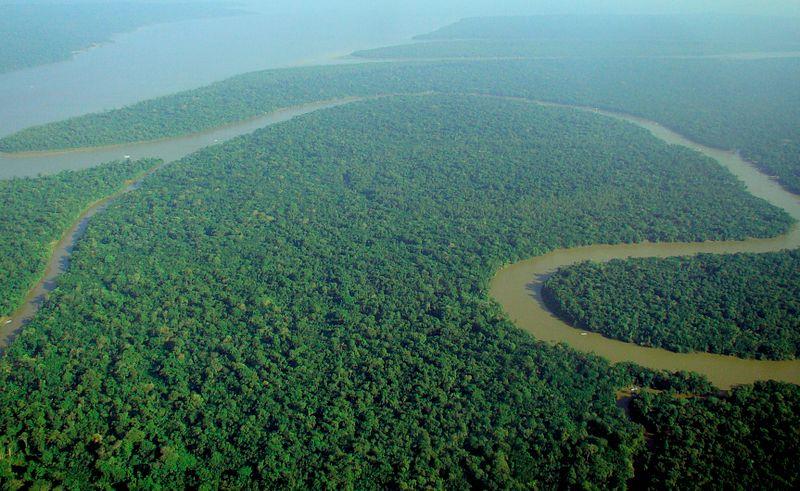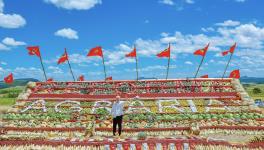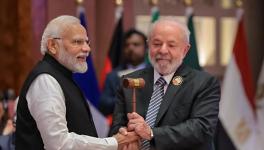Higher Deforestation in Amazon’s Protected Areas During Bolsonaro Regime

Aerial view of the Amazon Rainforest. Image Courtesy: Wikimedia Commons
A recent study published in Nature Sustainability has revealed how former Brazilian President Jair Bolsonaro’s policies have affected the Amazon forest.
The study suggests that the protected areas in the largest rainforest of the world, which has the highest biodiversity, saw higher and faster rates of deforestation compared to non-protected areas.
Between 2018 and 2021, the rate of gross forest loss was twice as in the protected areas, which are also indigenous territories,
than the forest loss in non-protected areas. This is an alarming trend, the researchers have warned. According to them, this loss pertains to the economic development model coupled with the loosening of environmental conservation policies implemented by Bolsonaro.
“Indigenous lands and protected areas are vulnerable in a different way from the non-protected areas. The forest in these areas is mostly primary forest. They have more biomass and more biodiversity. And if they are lost, it will have a disproportionate impact in terms of biodiversity, conservation, and carbon storage”, said Xianming Xiao, the corresponding author of the study and professor at the Center for Earth Observation and Modelling, University of Oklahoma, USA.
The study also indicates that the annual forest area loss was a reflection of the forest policies of different governments. There was a large reduction in forest loss from 2000 to the middle of 2010s during the former regime of current President Luiz Inacio Lula da Silva. On the contrary, during his successor’s regime, forest loss in the indigenous territories was the worst. However, Lula coming back to power and his pre-election promise of safeguarding the Amazon raise hopes amongst scientific communities.
Nevertheless, it will be a challenging task. Xiao said, “How to rebuild effective policies and reduce forest area loss in the Brazilian Amazon in the coming years will be one of the grand challenges for Lula's administration and international communities.”
It is worth mentioning that Brazil expanded the protected forest areas across 52% of the Brazilian Amazon from 2000 to 2021. Hence, the recent loss of forests in indigenous territories is doubly worrying.
“Between 2000 and 2021, the areas designated as indigenous territories or protected areas increased to cover approximately 52% of forests in the Brazilian Amazon, accounting for only 5% of net forest loss and 12% of gross forest loss in the period. This finding highlights the vital role of Indigenous territories and the protected areas for forest conservation in the region,” said Yuanwei Qin, the first author of the study and also from the University of Oklahoma.
Hence, the results show that the recent trend of forest destruction can outpace what had been achieved earlier. The researchers used satellite images to bring out the estimation.
Between March and September in 2020 alone, Brazilian legislators passed 27 Acts reducing environmental regulations, and fines for violating conservation laws dropped up to 72%. The study also found that COVID-19 impacted the process. With the surge in the disease, indigenous people were hit hard and illegal loggers and miners found it easy to encroach on their lands.
Another interesting point that the study revealed is that protected areas monitored strictly lost more forests than the protected areas designed for sustainable use, where humans can work and find means of livelihood.
According to Xiao, the strictly protected areas, meant for better forest conservation, have different mechanisms through which the demand for industry growth were met with and hence the increased deforestation was observed. This coupled with COVID-19 and economic planning over the past few years gave rise to the worrying situation.
However, the interesting part is that the areas protected for sustainable use still remain effective. This indicates how sustainable use policy along with protection of indigenous people and their lands are effective in conservation.
“That raises a question in how we address forest conservation and human development. It shows we maybe want to build protected areas that carefully consider how to fit the needs of people in that area. Protection must balance the needs of the forest and of people,” Xiao said.
Xiao’s team also published another study in 2019 using satellite imagery to create annual Brazilian forest maps. For the future, the team has already gathered the satellite data for 2022 and will keep a watch over how the new government deals with conservation.
Get the latest reports & analysis with people's perspective on Protests, movements & deep analytical videos, discussions of the current affairs in your Telegram app. Subscribe to NewsClick's Telegram channel & get Real-Time updates on stories, as they get published on our website.
























